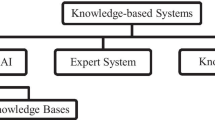Abstract
Electronic nose devices consisting of a matrix of sensors to sense the smell of various target gases have received considerable attention during the past two decades. This paper presents an efficient classification algorithm for a self-designed electronic nose, which integrates both genetic algorithms (GAs) and fuzzy support vector machines (FSVMs) to detect the target odor. GAs are applied to select the informative features and the optimal model parameters of FSVMs. FSVMs are adopted as fitness evaluation criterion and the sequent odor classifier, which can reduce the outlier effects and provide a robust and accurate classification. This proposed algorithm has been compared with some commonly used learning algorithms, such as support vector machine, the k-nearest neighbors and other combination algorithms. This study is based on experimental data collected from the response of the UTS NOS.E, which is the electronic nose system developed by the University of Technology Sydney NOS.E team. In comparison with other approaches, the experiment results show that the proposed odor classification algorithm can significantly improve the classification accuracy by selecting high-quality features and reach to 92.05% classification accuracy.















Similar content being viewed by others
References
Persaud, K., Dodd, G.: Analysis of discrimination mechanisms in the mammalian olfactory system using a model nose. Nature 299(5881), 352–355 (1982)
Gardner, J.W., Bartlett, P.N.: A brief history of electronic noses. Sens. Actuators B Chem. 18(1–3), 210–211 (1994)
Wilson, A.D., Baietto, M.: Applications and advances in electronic-nose technologies. Sensors 9(7), 5099–5148 (2009)
Benedetti, S., Mannino, S., Sabatini, A.G., Marcazzan, G.L.: Electronic nose and neural network use for the classification of honey. Apidologie 35(4), 397–402 (2004)
Brudzewski, K., Osowski, S., Markiewicz, T.: Classification of milk by means of an electronic nose and svm neural network. Sens. Actuators B Chem. 98(2), 291–298 (2004)
Llobet, E., Hines, E.L., Gardner, J.W., Bartlett, P.N., Mottram, T.T.: Fuzzy artmap based electronic nose data analysis. Sens. Actuators B Chem. 61(1), 183–190 (1999)
Yu, H., Wang, J.: Discrimination of longjing green-tea grade by electronic nose. Sens. Actuators B Chem. 122(1), 134–140 (2007)
Bhattacharyya, N., Bandyopadhyay, R., Bhuyan, M., Tudu, B., Ghosh, D., Jana, A.: Electronic nose for black tea classification and correlation of measurements with tea taster marks. IEEE Trans. Instrum. Meas. 57(7), 1313–1321 (2008)
Cynkar, W., Dambergs, R., Smith, P., Cozzolino, D.: Classification of tempranillo wines according to geographic origin: combination of mass spectrometry based electronic nose and chemometrics. Analytica Chimica Acta 660(1), 227–231 (2010)
Shi, B., Zhao, L., Zhi, R., Xi, X.: Optimization of electronic nose sensor array by genetic algorithms in Xihu-Longjing tea quality analysis. Math. Comput. Modell. 58(3), 752–758 (2013)
Gromski, P.S., Correa, E., Vaughan, A.A., Wedge, D.C., Turner, M.L., Goodacre, R.: A comparison of different chemometrics approaches for the robust classification of electronic nose data. Anal. Bioanal. Chem. 406(29), 7581–7590 (2014)
Singh, S., Hines, E.L., Gardner, J.W.: Fuzzy neural computing of coffee and tainted-water data from an electronic nose. Sens. Actuators B Chem. 30(3), 185–190 (1996)
Esme, E., Karlik, B.: Fuzzy c-means based support vector machines classifier for perfume recognition. Appl. Soft Comput. 46, 452–458 (2016)
Kodogiannis, V.S., Alshejari, A.: A fuzzy-wavelet neural network model for the detection of meat spoilage using an electronic nose. In: 2016 IEEE International Conference on Fuzzy Systems (FUZZ-IEEE), pp. 710–717. IEEE (2016)
Cordón, O., Gomide, F., Herrera, F., Hoffmann, F., Magdalena, L.: Ten years of genetic fuzzy systems: current framework and new trends. Fuzzy Sets Syst. 141(1), 5–31 (2004)
Lin, C.-F., Wang, S.-D.: Fuzzy support vector machines. IEEE Trans. Neural Netw. 13(2), 464–471 (2002)
Inoue, T., Abe, S.: Fuzzy support vector machines for pattern classification. In: International Joint Conference on Neural Networks, 2001. Proceedings. IJCNN’01, vol. 2, pp. 1449–1454. IEEE (2001)
Batuwita, R., Palade, V.: Fsvm-cil: fuzzy support vector machines for class imbalance learning. IEEE Trans. Fuzzy Syst. 18(3), 558–571 (2010)
Pearce, T.C., Schiffman, S.S., Nagle, H.T., Gardner, J.W.: Handbook of Machine Olfaction: Electronic Nose Technology. Wiley, Hoboken (2006)
Xian, G.-M.: An identification method of malignant and benign liver tumors from ultrasonography based on glcm texture features and fuzzy svm. Expert Syst. Appl. 37(10), 6737–6741 (2010)
Hao, P.-Y., Chiang, J.-H., et al.: A fuzzy model of support vector regression machine. Int. J. Fuzzy Syst. 9(1), 45–50 (2007)
Haykin, S.: Neural Networks, a Comprehensive Foundation, 2nd edn. Prentice Hall, Upper Saddle River (1999)
Xu, Y., Weaver, J.B., Healy, D.M., Lu, J.: Wavelet transform domain filters: a spatially selective noise filtration technique. IEEE Trans. Image Process. 3(6), 747–758 (1994)
Estakhroueiyeh, H.R., Rashedi, E.: Detecting moldy bread using an e-nose and the KNN classifier. In: 2015 5th International Conference on Computer and Knowledge Engineering (ICCKE), pp. 251–255. IEEE (2015)
Bedoui, S., Samet, H., Samet, M., Kachouri, A.: Gases identification with support vector machines technique (SVMS), In: 2014 1st International Conference on Advanced Technologies for Signal and Image Processing (ATSIP), pp. 271–276. IEEE (2014)
Huang, C.-L., Wang, C.-J.: A ga-based feature selection and parameters optimizationfor support vector machines. Expert Syst. Appl. 31(2), 231–240 (2006)
Author information
Authors and Affiliations
Corresponding author
Rights and permissions
About this article
Cite this article
Liu, T., Zhang, W., McLean, P. et al. Electronic Nose-Based Odor Classification using Genetic Algorithms and Fuzzy Support Vector Machines. Int. J. Fuzzy Syst. 20, 1309–1320 (2018). https://doi.org/10.1007/s40815-018-0449-8
Received:
Revised:
Accepted:
Published:
Issue Date:
DOI: https://doi.org/10.1007/s40815-018-0449-8




